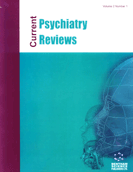Abstract
Objectives: Our understanding of the pathogenesis of schizophrenia is limited. In this regard, there have been a number of reports of altered thiol metabolism in schizophrenia. The aim of this review is to integrate disparate published findings into a more global overview of altered thiol metabolism and the potential role of thiol therapy in schizophrenia.
Methods: Publications of thiol measurements in different metabolic compartments in schizophrenic patients (SP) were organized with regard to which component pathway of overall thiol metabolism was involved. This formed the basis of providing an integrated interpretation of current published data.
With regard to clinical trials of thiols, there are a number of case reports and studies with small patient numbers. The reliability of these trials is questionable such that we reviewed the one double-blind study evaluating the thiol agent, Nacetylcysteine (NAC) on clinical outcomes in 69 SP. We also reviewed 2 small mechanistic studies in SP evaluating the effects of NAC on EEG synchronization and on mismatch negativity, an electrophysiological index of glutamatergic transmission at NMDA receptors.
Results: The data reviewed were consistent with dysfunctional thiol metabolism spanning the methionine-homocysteine cycle, through the trans-sulfuration pathway to GSH synthesis and metabolism. Additionally, several thiol-dependent pathways appear to be affected. Preliminary clinical trials with NAC suggest that thiol replacement strategies may represent a new therapeutic avenue for SP. Larger patient cohorts are required to substantiate these initial findings and will provide an opportunity to monitor the effects of thiol drugs on biomarkers of altered thiol metabolism in SP.
Limitations: There are a number of reports of altered thiol metabolism in SP and indications of clinical benefits with the thiol agent NAC, as an adjunct to antipsychotic drugs. However, these are all probe studies with small numbers of patients. The next step is to a more in-depth evaluation of thiol metabolism and larger scale clinical trials of thiol agents. Integrating clinical and biochemical findings will significantly advance our knowledge base in this area.
Conclusion: Thiol metabolism is clearly disrupted in SP and thiol replacement strategies are worthy of further clinical evaluation, based on initial pilot studies with NAC in SP.
Keywords: Schizophrenia, Thiols, Cysteine, Homocysteine, Glutathione, Lipoic acid, Erdosteine, N-acetylcysteine.
 8
8

